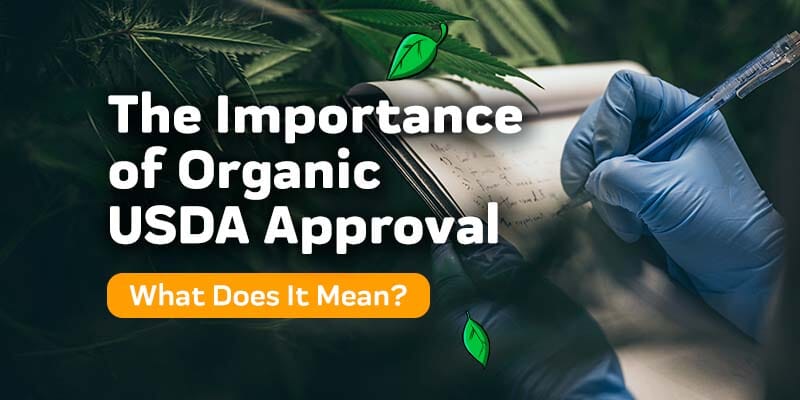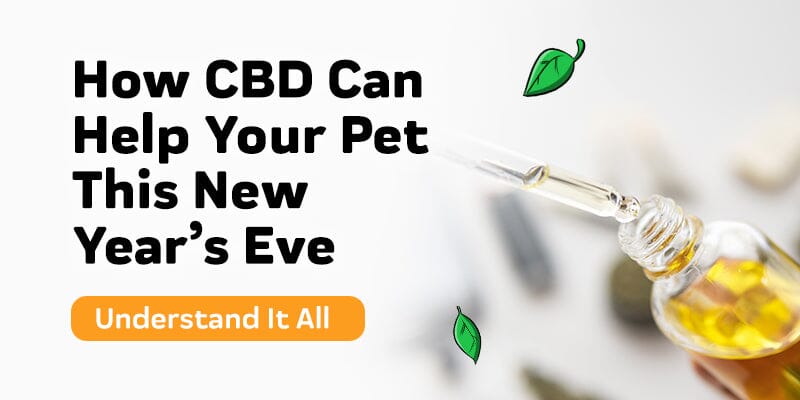Cytochrome p450
![]() Reading Time:
Reading Time:
- Chemical Pharmacology And Drug Metabolism: 101
- Key Points
- What Is The Cytochrome P450 Enzyme System?
- Where Are Cytochrome P450 CYP Enzymes Found?
- What Drugs Are Metabolized By CYP450?
- Metabolizing CBD and THC
- Safest CBD For Avoiding Drug Interactions?
- Final Thoughts
Meet the superfamily, the cytochrome P450 enzymes, sometimes simplified as the CYP enzymes. Appearing in all kingdoms of life, from plants to bacteria, and in rare cases, viruses, the P450 superfamily are responsible for metabolizing internal and external chemicals. Internal ones include estrogen and testosterone, while external ones include many of the prescription drugs we and our pets take.
And it’s this that will be our main topic of discussion. In particular, how cytochrome enzymes metabolize CBD and other cannabis products. Which are often used in tandem with drugs broken down by our family of enzymes, leading to potential drug interactions.
Right off, it’s important to note that while the phrase “drug interaction” sounds scary, it’s quite common. In both humans, canines, and on, p450 enzymes metabolize a wide range of chemicals. And this causes drug interactions way more often than you may think. Especially, since several common items from tobacco to grapefruit to CBD are all known to affect cytochrome enzymes’ ability to metabolize.
This means, while, in our opinion, CBD’s ability to cause a drug-to-drug interaction is its most concerning side effect, it shouldn't let it trick you into thinking CBD is off the table. Especially, since besides this side effect, adverse effects from CBD are fairly non-existent.
In most cases, regarding CBD or not, drug-drug interactions are so mild they go unnoticed or cause little to no concern. However, it’s important to be aware of them because a drug interaction can have serious consequences. An interruption in cytochrome p450's ability to accurately carry out its role can cause a drug’s dosage or potency to change in either direction. This can cause that drug to become ineffective or cause it to have harsher adverse effects.
Chemical Pharmacology And Drug Metabolism: 101
Before we go on to talk about the P450 system, we want to let you know that the topic of drug metabolism is complex. In fact, pretty much just the field of chemical pharmacology is tricky.
However, our goal with this article is to simplify the role of cytochrome P450 in drug metabolism while giving you an in-depth look at the subject.
As such, some of the topics below are more complex than others, mainly in the vocabulary department. Fortunately, we are staying far away from the ever-popular journal style that's often done for articles on P450 and its role in drug metabolism. First, because there are more than enough of these style articles. Second, because they are incredibly difficult to understand, and even when you do understand them, they are quite dense, requiring extensive reading.
So while this article on the P450 system is a level higher than the majority of our blogs, we're confident this article gives you the best overview while still keeping it easy to understand. We believe this is so important because of the adverse effects that can come from mixing drugs together, causing drug-drug interactions.
With that said, let's find out all about the P450 drug-metabolizing system and take a dive into the subject of clinical pharmacology!
Key Points
- When a drug or another external compound enters the body, it has several mechanisms it uses that alter and transform the drug in forms (metabolites) that are more easily eliminated from the body.
- Cytochrome P450, a family of enzymes heavily found in the liver, is responsible for metabolizing the majority of prescription medication given to humans, canine, felines, and other mammals.
- While the majority of research has focused on the human cytochrome P450 superfamily of enzymes, enough research on other mammals shows the endogenous functions of the system largely carry over. However, genetic variation (polymorphism) in humans has shown to significantly alter drug effects unexpectedly.
- Often, when a compound is metabolized by cytochromes P450, it can temporarily alter the activity of the enzymes. This results in them breaking down other compounds faster or slower than intended, leading to stronger or weaker drug effects.
- While CBD and other hemp and cannabis products are known to both induce and inhibit CYPs, there are several methods for ensuring their role in a drug interaction is eliminated, largely avoided, or safely managed. This results in research tending to overwhelmingly support CBD, even when a drug interaction is seen.
What Is The Cytochrome P450 Enzyme System?
Bounded to the membrane of cells (cyto) while containing heme pigment (chrome and P), when a P450 attaches to a carbon monoxide particle, it absorbs light at a wavelength of 450 nm. This gives our membrane-bound family of enzymes their name. CYP enzymes mainly use iron to oxidize things, making them more water-soluble. This helps remove both harmful and good substances from the body.
In mammals, the cytochrome P450 enzymes have many roles, including:
-
Steroidal, fatty acid, and xenobiotic oxidation
-
Hormone synthesis and breakdown
-
Clearance of various compounds preventing buildup in blood plasma
What Is The Role Of Cytochrome P450 In Drug Metabolism?
CYP enzymes are responsible for metabolizing or breaking down anywhere between 60-75% of the drugs we take or give to our dogs and cats. When these proteins are inhibited or induced, the rate at which they break down a drug is affected. This can result in the potency of another drug metabolized by the same P450 enzymes increasing or decreasing.
Several non-drug compounds can cause interactions by affecting the cytochrome P450 system and its ability to carry out its roles. The most notable is grapefruit juice, which contains the chemicals bergamottin, dihydroxybergamottin, and paradicin-A, which can all inhibit P450 proteins, causing drug interactions that increase potency. Drug interactions are so common with grapefruit juice, that one way to tell if CBD will cause any interactions is by looking for warnings about grapefruit on your drug's label.
Drug Interactions: Drug inhibitors and Drug Inducers
Let’s talk about ‘inhibit’ real quick because it has more to it than many think. As well, many use it as a catch-all term for things that can affect p450 CYP genes' ability to metabolize external compounds.
When something like a drug interacts with cytochrome enzymes and prevents it from doing its job accurately, we call it either an inhibitor or an inducer. The terms will help clue you into what they do to cytochrome enzymes.
Inhibitor = A compound that will delay cytochrome p450 enzymes from metabolizing other compounds. This can increase a drug’s concentration in the body, resulting in its potency increasing.
Inducer = A compound that speeds up the rate cytochrome p450 enzymes metabolize things like medications. This can reduce potency e.g. if two drugs are taken together, but one is an inducer of P450 enzymes, the non-inducer drug may need its dosage increased to compensate.
As you can see in our inducer example above, a drug interaction doesn’t necessitate that two drugs can never be used together. In both cases, when one drug is interacting with another via P450 CYP enzymes, a simple correction in dosage in either or both of the drugs is alone often enough.
Another important thing to note is because the P450 CYP family is quite large and made up of many different enzymes, it’s possible for a drug to be an inducer on one type of enzyme while inhibiting another. This also means that just because a drug interacts negatively with p450 CYP genes, it doesn’t mean it will cause a drug interaction with a drug that’s also metabolized by it. There are over a thousand different cytochrome enzymes that have been identified across all the organisms they appear in. In humans, there are about 50 (49 genes and 15 pseudogenes).
Genetic Polymorphisms
The metabolism roles of the CYP enzyme P450 family are quite complex as you can see, and that’s not even taking into account how genetics and different races can affect the significance of a drug interaction.
“Seven percent of Caucasians and 2–7% of African Americans are poor metabolizers of drugs dependent on CYP2D6, which metabolizes many beta-blockers, antidepressants, and opioids. This is because the drug's metabolism via CYP P450 enzymes exhibits genetic variability.” via Drugguid.com.
We call this polymorphism, and even just a 1% difference in a gene can have profound consequences.
In dogs, it’s well noted that greyhounds recover more slowly from certain anesthetic drugs compared to other dog breeds. The long-held theory is greyhounds have developed a gene mutation, making them deficient in CYP2B11 enzymes which are a part of the larger cytochrome P450 enzyme family. The reasoning for this is because greyhounds are only affected by certain injectable anesthetics, leading the suspension to fall on cytochrome P450 (CYP) 2B11 because it’s a critical clearance mechanism for these anesthetics.
A 2020 study sought to confirm suspicions that it was an issue with the CYP cytochrome enzymes family. Not only did they find that it does indeed appear to be a result of cytochrome enzymes, but several other dog breeds are also susceptible to this issue due to the same gene variant. This includes extremely popular dog breeds such as the Labrador Retriever, Golden Retriever, and English Bulldog. These are the first, third, and fifth most popular dog breeds owned in the USA, respectively, based on annual AKC registration.
This is actually more concerning to hear than it first appears because the genetic difference between dog breeds and human races is substantial. This means it's more likely for there to be gene variations that can affect the cytochrome P450 system and its role in drug metabolism. Then, most research on the cytochrome system and our knowledge of it, come from studies on rodents and the human cytochrome p450 system.
CYP Enzymes Role On A Drug’s Dosage
The ability for our Cytochrome P450 enzymes to properly metabolize is crucial to determining a drug's dosage. But as you have seen, many things can throw off the process, and this helps explain why people and animals react differently to similar drugs. Why some may see more adverse effects from a drug, where others don’t, or why some drugs just don’t significantlly help some, while being amazing for others.
Where Are Cytochrome P450 CYP Enzymes Found?
The majority of cytochrome P450 enzymes are expressed in the liver, specifically, the endoplasmic reticulum. This isn’t all that surprising since the liver is well-known for metabolizing over-the-counter (OTC) and prescription drugs, along with removing toxins. CYPs are found in the inner membrane of mitochondria.
You can also find them in lower concentrations in the intestines, lungs, brain, and kidneys. If you look closely enough, you can find cytochrome enzymes in most tissues of the body, where they play roles in vitamin D metabolism, cholesterol synthesis, and hormone synthesis and breakdown.
What Drugs Are Metabolized By CYP450?
There are several drugs that, when metabolized by cytochrome P450 enzymes, cause the enzymes to be either inhibited or induced.
When inhibited, cytochrome enzymes are delayed from breaking down other drugs, which can allow the drug to build up in the body, effectively raising its potency.
When induced, cytochrome enzymes can metabolize a drug too fast, effectively reducing its potency. In the overwhelming majority of cases, CYP enzymes can be either induced or inhibited.
A substrate of the cytochrome enzymes means it's a pharmacologically active drug that need to be metabolize to be cleared from the body. A substrate may increase, decrease, or have no effect on the activity of CYP genes.
CYP enzymes can be classified and broken down into families, subfamilies, and individual genes. Families are given a number e.g. CYP1 and CYP2. Subfamilies are identified by a letter e.g. CYP1A and CYP2C. Individual genes are identified by a second number, for example, CYP1A2 and CYP2C9.
Since there are so many numbers, we want to point out that again the P450 name is based on the 450nm light wavelength that all CYP enzymes in this family absorbed.
While there are over 50 CYP P450 genes, CYP1A2, CYP2C9, CYP2C19, CYP3A5, CYP3A4, and CYP2D6 enzymes metabolize the vast majority of drugs, with CYP3A4 and CYP2D6 being the most significant in the role of drug metabolism.
CYP1A2
Potent Inhibitors: Amiodarone (Cordarone), cimetidine (Tagamet), ciprofloxacin (Cipro), fluvoxamine (Luvox‡)
Potent Inducers: Carbamazepine (Tegretol), phenobarbital, rifampin (Rifadin), tobacco
Substrates: Caffeine, clozapine (Clozaril), theophylline
CYP2C9
Potent Inhibitors: Amiodarone, fluconazole (Diflucan), fluoxetine (Prozac), metronidazole (Flagyl), ritonavir (Norvir), trimethoprim/sulfamethoxazole (Bactrim, Septra) Potent Inducers: Carbamazepine, phenobarbital, phenytoin (Dilantin), rifampin Substrates: Carvedilol (Coreg), celecoxib (Celebrex), glipizide (Glucotrol), ibuprofen (Motrin), irbesartan (Avapro), losartan (Cozaar)CYP2C19
Potent Inhibitors: Fluvoxamine, isoniazid (INH), ritonavir Potent Inducers: Carbamazepine, phenytoin, rifampin Substrates: Omeprazole (Prilosec), phenobarbital, phenytoinCYP2D6
Potent Inhibitors: Amiodarone, cimetidine, diphenhydramine (Benadryl), fluoxetine, paroxetine (Paxil), quinidine, ritonavir, terbinafine (Lamisil)
No significant inducers:
Substrates: Amitriptyline, carvedilol, codeine, donepezil (Aricept), haloperidol (Haldol), metoprolol (Lopressor), paroxetine, risperidone (Risperdal), tramadol (Ultram)
CYP3A4 and CYP3A5
Potent Inhibitors: Clarithromycin (Biaxin), diltiazem (Cardizem), erythromycin, grapefruit juice, itraconazole (Sporanox), ketoconazole (Nizoral), nefazodone (Serzone‡), ritonavir, telithromycin (Ketek), verapamil (Calan)
Potent Inducers: Carbamazepine, Hypericum perforatum (St. John's Wort), phenobarbital, phenytoin, rifampin
Substrates: Alprazolam (Xanax), amlodipine (Norvasc), atorvastatin (Lipitor), cyclosporine (Sandimmune), diazepam (Valium), estradiol (Estrace), simvastatin (Zocor), sildenafil (Viagra), verapamil, zolpidem (Ambien)
Metabolizing CBD and THC
Both CBD and THC are metabolized in the liver, and as you may have guessed, by several of the cytochrome P450 enzymes, which include CYP2C9, CYP2C19, and CYP2D6 from above. Similar to how grapefruit juice and St. John’s Wort can cause drug interactions, so too can they interact with the body’s ability to metabolize cannabinoids like CBD and THC. St. John’s Wort can decrease CBD’s potency by inducing CYP3A enzymes, while grapefruit juice inhibits the same enzymes and can raise CBD’s potency.
Like grapefruit juice and St. John's Wort, CBD appears to be both an inhibitor and inducer of several CYP cytochrome enzymes. However, when it’s taken and how much, greatly affect its ability to cause a drug-drug interaction.
Using CBD Alongside Other Medication
As with other medications that cause drug-drug interactions through CYP enzymes, there are many ways CBD can be successfully used with drugs it may interact with. If you plan to use CBD in conjunction with a prescription drug, it's important to research whether that drug is metabolized by cytochrome P450 enzymes. If so, reaching out to your doctor or veterinarian is where you should start.
In many cases, keeping the dosage of CBD low is enough to avoid a drug-to-drug interaction. However, we must mention there is contradicting research on this.
A clinical study out of Massachusetts General Hospital found that simply lowering the dose of CBD was enough to avoid it interacting with the anticonvulsant drug, Clobazam. But earlier in 1992, a review by Lester Bornheim found even at low dosages CBD inhibited enough CYP genes to interact with a anticonvulsant. As well, these dosages were so low, CBD lost its desired anti-epileptic effect, which was the thing it was being studied for.
Why these conflicting reports? It's hard to say; chalk it up to that drug metabolism is complex.
However, even when this occurs, all hope is not lost. Spacing the time between the administration of CBD and the other drug can greatly help. Using CBD only when absolutely necessary and not daily is another option. Along with lowering or increasing the other drug’s dosage to account for CBD’s inducing or inhibiting effects of the p450 genes.
To ensure there is no drug-to-drug interaction when using CBD or that it’s largely prevented, your medical professional i.e. your doctor or veterinarian may wish to check plasma levels periodically. If a drug is being induced or inhibited, the concentration of it will abnormally decrease or increase in blood plasma, signaling that a change in dosage may be necessary. This process is very quick, easy, and largely affordable, and thanks to it, it instills a lot of confidence in medical professionals who worry about the unknown potential for CBD's ability to interact with another drug.
Despite CBD’s and other cannabis products' ability to interact with prescription drugs, to our knowledge, research has always concluded CBD is a safe and welcome addition when the right safety precautions are accounted for.
Choosing The Right CBD For Avoiding Drug Interactions
In the large majority of CBD and other cannabis products, there are hundreds of different compounds in play within them like CBD, THC, CBG, CBC, along with the terpenes. All of which largely have worthwhile health benefits when ingested. We call these products Full Spectrum, such as full spectrum CBD oil. Now, luckily while all of these compounds will have a pharmacological impact on cytochrome enzymes, it's very low. In fact, we can largely focus on the amount of CBD and THC in the cannabis product when working to find the best dosage.
One of the most crucial parts in avoiding drug interactions when using CBD is the reliance on a precise dosage from all drugs involved. However, in most cases, CBD doesn't require a precise dosage. And this in combination with many shady companies trying to make a quick buck, results in many CBD products not having the amount of CBD and THC they advertise. Often having too little CBD and too much THC.
With THC impacting the cytochromes' ability to metabolize as well, this all means a 5mg dose from one CBD product could significantly be off from another. This can cause issues for those not on a prescription drug, let alone someone on one. Fortunately, there is a way to confirm if a CBD product is accurate.
When buying CBD, always confirm first the company provides a Certificate of Analysis (COA) for it. A COA means the company has sent their hemp CBD extract to an independent lab that verifies that it contains what the label says. This is so important in all cases, but especially in one where you require a precise dosage of CBD to avoid causing drug-drug interactions.
Safest CBD For Avoiding Drug Interactions?
When used with the safety measures outlined above, CBD in its oil form is generally preferred. Especially since they are the easiest for administering precision dosages, which helps CBD avoid interactions with cytochrome p450 proteins that could troublingly interfere with other drugs.
However, there may be a better and safer option with a CBD that largely, if not completely, avoids the liver's cytochrome P450 genes and drugs metabolized by them.
Unlike other forms of CBD, CBD in a topical or lotion form is not ingested. It's theorized that because they are simply placed on the skin, there is little to no chance CBD can make its way to the Cytochromes p450 that are involved in drug metabolism that occurs in the liver.
Now, it's important to note, topicals don't provide near the same degree of benefits, but they are great for surface-level pain and skin issues, with the ability to replace many conventional drugs used to do the same.
Final Thoughts
While they can be scary, drug-drug interactions are more common than you probably think. From grapefruit juice to cigarette smoke, there are several things that can throw off the CYP cytochrome system and the drug metabolizing enzymes found within.
We hope you enjoyed our in-depth look into the potential for CBD to cause a CYP P450 drug interaction along with learning about how the CYP system is involved in the metabolism of drugs. We understand how complex of a topic the CYP system and the metabolism of drugs along with clinical pharmacology, in general, can be. We appreciate you for reading and thank you for taking the time to learn about this fascinatingly important but weighty subject.
While research shows CBD can cause drug interactions, clinical research from human studies along with studies on other animals shows CBD can be safely used alongside a drug it may interact with via cytochrome p450 genes. Precision dosage and leaving space between administrations are enough to avoid CBD having an adverse effect on drug-metabolizing enzymes.
As always, please check with either your doctor or your vet, if you or your pet are taking any prescription drugs before using CBD.














